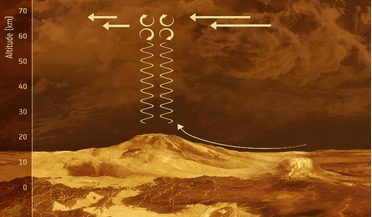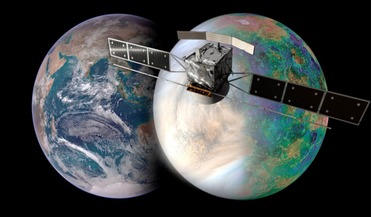 19 July 2016
Gravity waves on Venus create 'fountain of Aphrodite'
19 July 2016
Gravity waves on Venus create 'fountain of Aphrodite'
..., creating both the observed 'fountain' and an extended downwind plume of vapour. "We've known for decades that Venus' atmosphere contains a mysterious ultraviolet absorber, but we still don't know its identity," says Bertaux. "This finding helps...
 19 May 2021
Scientists unexpectedly find heavy metal vapour in comets throughout our Solar System, and beyond
19 May 2021
Scientists unexpectedly find heavy metal vapour in comets throughout our Solar System, and beyond
... have even more in common than previously thought. “All of a sudden we understood that gaseous nickel is present in cometary atmospheres in other corners of the Galaxy,” says co-author Michał Drahus, also from the Jagiellonian University. “How cool...
 10 February 2022
SpaceX Starlink satellites fall out of sky after storm
10 February 2022
SpaceX Starlink satellites fall out of sky after storm
... a geomagnetic storm the following day,” SpaceX admitted in a statement issued a week later. “These storms cause the atmosphere to warm and atmospheric density at our low deployment altitudes to increase. The speed and severity of the storm resulted...
 11 June 2021
Then there were 3: ESA selects revolutionary Venus mission EnVision
11 June 2021
Then there were 3: ESA selects revolutionary Venus mission EnVision
... probe the planet’s internal structure and gravity field as well as investigate the structure and composition of the atmosphere. The instruments will work together to best characterise the interaction between the planet’s different boundaries – from...
 November 2020
The alien hunter’s field manual
November 2020
The alien hunter’s field manual
... us to determine whether life exists on exoplanets that we can characterise. So far, measurements have been mostly restricted to the atmosphere of about a dozen hot Jupiters. The next few decades will see multiple experiments that, when used...
 07 March 2018
World's first firing for ESA's air-breathing electric thruster
07 March 2018
World's first firing for ESA's air-breathing electric thruster
... xenon was replaced in stages by a nitrogen–oxygen air mixture until it could ignite solely from the collected atmospheric propellant. “This result means air-breathing electric propulsion is no longer simply a theory but a tangible, working concept...